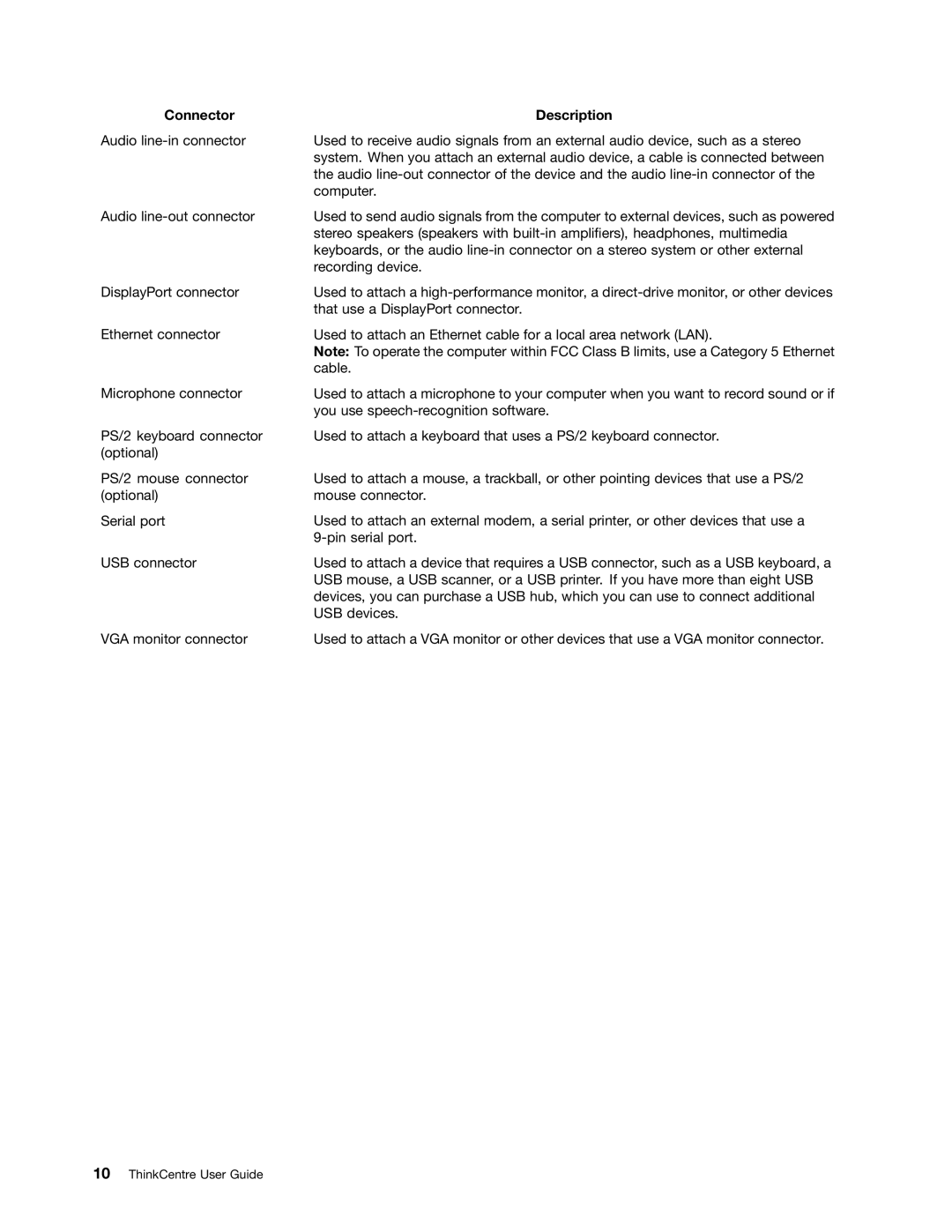Connector | Description |
Audio | Used to receive audio signals from an external audio device, such as a stereo |
| system. When you attach an external audio device, a cable is connected between |
| the audio |
| computer. |
Audio | Used to send audio signals from the computer to external devices, such as powered |
| stereo speakers (speakers with |
| keyboards, or the audio |
| recording device. |
DisplayPort connector | Used to attach a |
| that use a DisplayPort connector. |
Ethernet connector | Used to attach an Ethernet cable for a local area network (LAN). |
| Note: To operate the computer within FCC Class B limits, use a Category 5 Ethernet |
| cable. |
Microphone connector | Used to attach a microphone to your computer when you want to record sound or if |
| you use |
PS/2 keyboard connector | Used to attach a keyboard that uses a PS/2 keyboard connector. |
(optional) |
|
PS/2 mouse connector | Used to attach a mouse, a trackball, or other pointing devices that use a PS/2 |
(optional) | mouse connector. |
Serial port | Used to attach an external modem, a serial printer, or other devices that use a |
| |
USB connector | Used to attach a device that requires a USB connector, such as a USB keyboard, a |
| USB mouse, a USB scanner, or a USB printer. If you have more than eight USB |
| devices, you can purchase a USB hub, which you can use to connect additional |
| USB devices. |
VGA monitor connector | Used to attach a VGA monitor or other devices that use a VGA monitor connector. |
Page 22
Image 22
